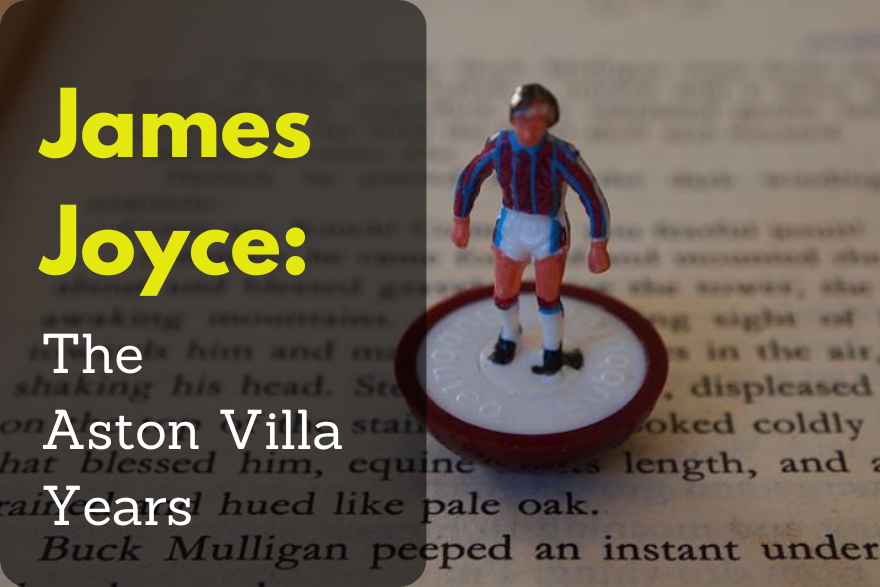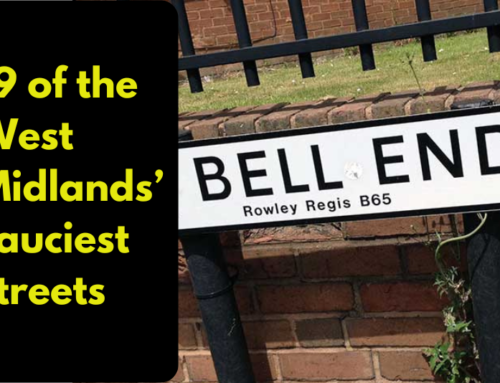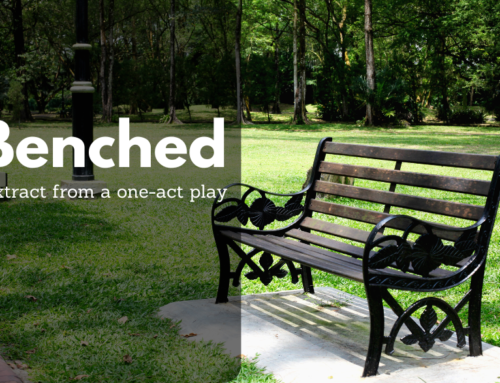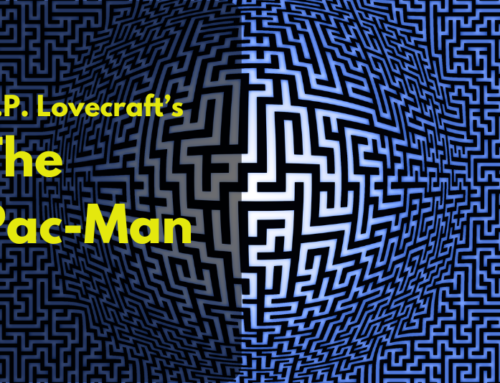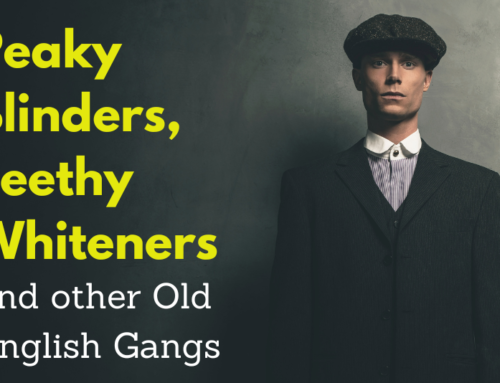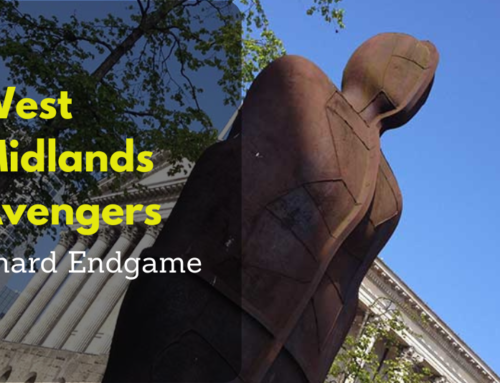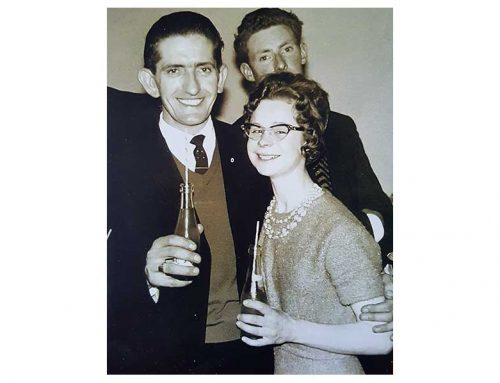Next week's auction of rare manuscripts by the great Irish author James Joyce looks set to ignite a bitter dispute between private collectors, leading academics and fans of a West Midlands football team. Featuring handwritten drafts of some of his earliest published work, the collection includes more than 1,500 pages of articles, match reports and in-depth player profiles that Joyce wrote between 1919 and 1924 for Aston Villa's weekly souvenir programme.
"This has got us all worried," says Harry H. Earwicker, a lifelong Villa supporter and spokesfan for the Anglo-Irish "soccerlit" pressure group, Villa Yootha Joyce. "There's a very real danger that some well-heeled foreign buyer could snap up part of this great club's history. These documents are the last surviving link between the modern-day Claret and Blue Army and the lost world of Modernist literature. They should remain at Villa Park, or at least somewhere in Witton."
As well as being a literary heavyweight, James Joyce will also be remembered as one of Aston Villa's original "famous fans". According to Joyce scholar Hugh Kenner, he was "the Nigel Kennedy of his day", and Joyce would often boast about this despite the fact that no serious artist in the 1920s wanted to be compared to Nigel Kennedy. What first attracted the Dublin-born writer to this legendary West Midlands club has been the subject of much speculation over the years. Most scholars now agree that it was probably a defiant act of artistic rebellion against the dated literary conventions of Victorian novelists who all supported Birmingham City.
Whatever the case, his passion for the club found its way into many of his most famous books. His autobiographical novel, Portrait of the Artist as a Young Man, was originally entitled Portrait of the Artist as a Villa Fan, while his masterpiece Ulysses was inspired by an away victory against Sheffield Wednesday in 1904.
Joyce began writing for the club's souvenir programme in 1919. He was living in impoverished exile in Zurich with his lover, Nora Barnacle, and was desperately struggling to make ends meet. By the time his ends eventually met it was too late, as the pair had already moved to Paris. To help alleviate Joyce's poverty, his well-connected patron, Harriet Shaw Weaver, put in a good word with Aston Villa's owners. In those days, the football souvenir programme scene was a melting pot of Modernism. T.S. Eliot, Gertrude Stein, and Marcel Proust all cut their creative teeth writing articles, match reports, and in-depth player profiles until people started taking them seriously. And it wasn't just writers: Pablo Picasso famously produced a series of strip cartoons for Birmingham City during his "Blues period".
Over the next five years, Joyce was a prolific contributor to the Villa souvenir programme. He produced 276 articles, 573 match reports, 834 play-by-play tactical analysis charts, and over 15,000 in-depth player profiles. This prodigious output was all the more remarkable as he spent most of this period living in the leafy Parisian Rue La Danny, so struggled to attend home games. Instead, he had to rely heavily on detailed telegrams, eyewitness accounts, and geometry.
Joyce's early articles for the souvenir programme featured a winning combination of hard-hitting match analysis, erudite Irish wit, and obscure literary allusions that proved to be a big hit with Villa fans. His classic work during this period included the groundbreaking match report Villa v QPR (1919) and its disappointing sequel, Villa v QPR (1920). During Villa's 1921-22 FA Cup campaign, Joyce received widespread acclaim for his detailed account of the long road to Wembley, which was entitled "The M1."
Joyce's love affair with Aston Villa was not to last, however. Egged on by fellow Villa fan Ezra Pound, his souvenir programme work became more experimental. Play-by-play tactical analysis reports featured an increased use of multiple-viewpoint narration and Lobachevskian geometry, which confused fans who were more familiar with traditional third-person narrative approaches and Euclidean geometry. He also abandoned many of the traditional rules of punctuation: a 1923 interview with Frank Barson upset the legendary "hard man" striker after Joyce removed all the quotation marks and replaced them with inverted commas. Barson later got his revenge by stealing the apostrophe from Finnegans Wake.
The situation finally came to a head in 1924 with his controversial profile of one of Villa's most notorious fans. Half a century before the 1970s "streaking" phenomenon, First World War veteran Macintosh Brown would interrupt Villa matches by charging across the field wearing nothing but a brown macintosh. Joyce's profile of this shady exhibitionist – complete with pop-up illustrations – resulted in a highly-publicised obscenity trial, and Joyce was forced to accept a three-match ban.
The club's owners were furious with Joyce. When Newcastle United defeated Villa in that year's FA Cup final, Joyce submitted a 10,000-word match report which cited the works of Catholic theologian St Thomas Aquinas. The club owners urged Joyce to remove these references, which, they felt, were "confusing to younger fans". For Joyce, this was the final straw. In a fit of rage, he attempted to set fire to his vast collection of Aston Villa scarves, tracksuits, and other paraphernalia. Unfortunately, due to his failing eyesight, he only managed to incinerate a pair of curtains and an early draft of his planned Ulysses sequel, Twolysses.
Despite this, Joyce's influence still remains strong at Villa Park, and many of his early poems have inspired some of the club's most enduring supporter chants. These include the poignant "We Love You Villa, We Do," the rousing "We are the Boys from the Holte Army," and, of course, the ever-popular "Shit on the City."
Aston Villa stuff at Amazon
As an Amazon Affiliate, I can earn a commission if you click a link and make a purchase at no additional cost to you.

